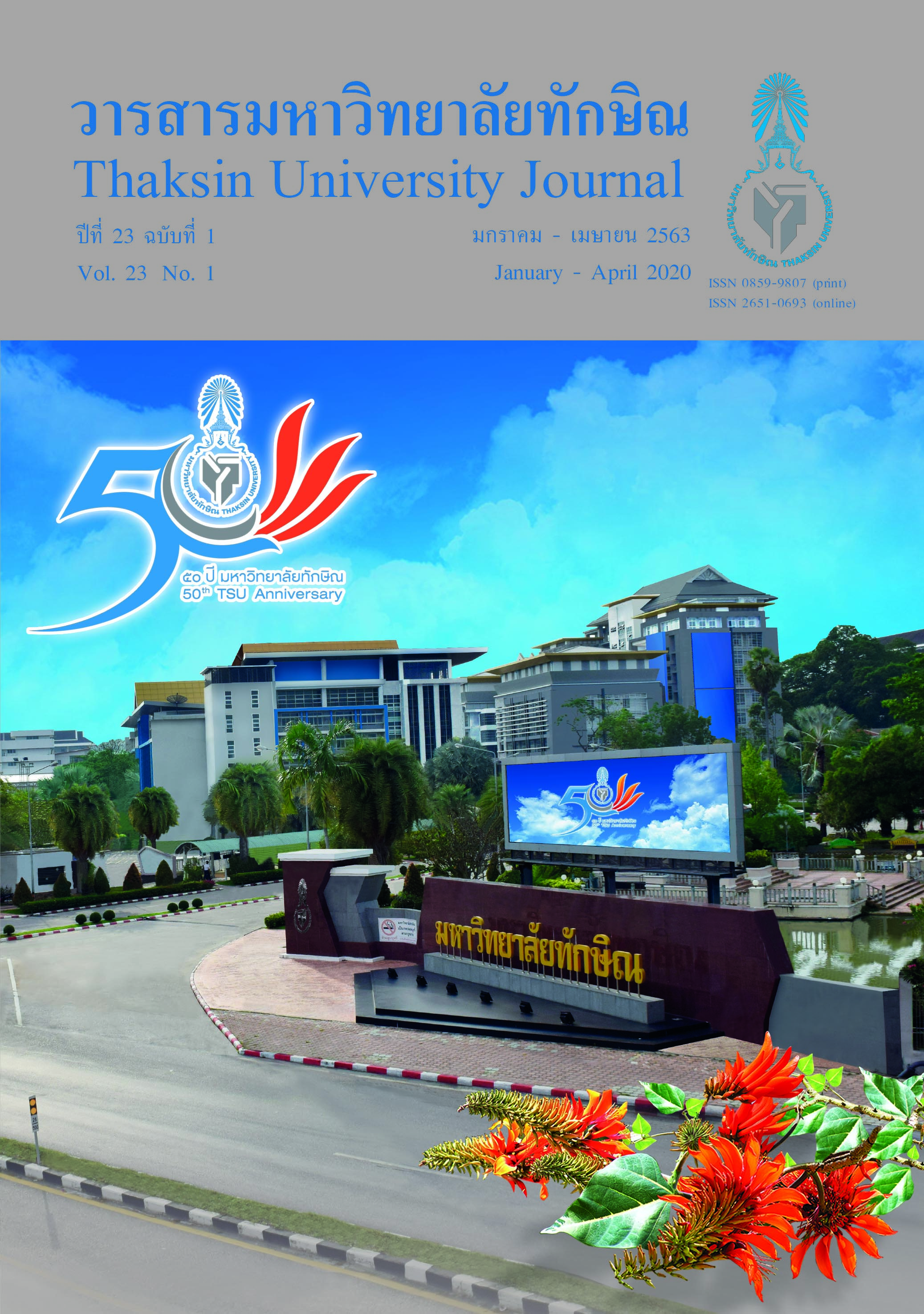Local Tourism Routes from Geolocation Data using Google Maps Platform
Main Article Content
Abstract
This study aims to develop an interactive tourism information system offering personalized tourism routes in Kanhom district, Nakhon Si Thammarat province. Whereas, the evaluation of performance by users’ satisfaction towards the information system. Data were collected from two groups of participants: 1) 60 tourism-related enterprises which want to promote a particular tourist attraction, accommodation, restaurants and souvenir shops, and 2) a group of tourists who need information of new local tourist attractions. Google Maps Platform was used to define geolocation and mark points in the map by Haversine formula with MySQL database and PHP programming to generate a series of travel routes. The research results revealed that the developed application has an ability to generate travel routes and help the tourists to plan their routes to the target tourist attractions. The users of the information system showed a very high level of satisfaction at 4.82 towards the developed application. The access to this application in tourism industry can increase the numbers of other locality tourists in new tourist attractions in local place.
Article Details

This work is licensed under a Creative Commons Attribution-NonCommercial-NoDerivatives 4.0 International License.
References
Suppasorn, Y. Keep calm and look forward to 2019 (Online). Retrieved 25 February 2020, from https:// www.tatreviewmagazine.com/article/tourism-thailand-2562.
Wladyka, K. D. (2017). Queries to Google search as predictors of migration flows from Latin America to Spain, Journal of Population and Social Studies, 25(4), 312–327.
Chaiyakarm, T. (2018). Application of geographic information system for choosing path by using network analyst for traveling in the central of Thailand, Thai Science and Technology Journal, 26(7), 1116–1129.
Phengsuk, T. (2018). The information development of the Buddha’s footprint heritage tourism-route by the Google API. Case study: Bua-bok Buddha’s footprint in Udon Thani, Journal of Humanities and Social Sciences, Rajapruk University, 4(2), 52–63.
Noimahawai, S., & Longpradit, P. (2016). Personalised location awareness application for Phetchaburi tourism with Google Map API on mobile with Android operating system, Journal of Project in Computer Science and Information Technology, 2(2), 49–57.
Chaiyaratsamee, K., & Khunboa, C. (2010). Object tracking system using wireless sensor network in open area (Zigbee), In The 11th Graduate Research Conference. 461–467. February 12, 2010, Faculty of Engineering. Khon Kean: Khon Kaen University.
Anisya & Swara, G. Y. (2017). Implementation of haversine formula and best first search method in searching of tsunami evacuation route. IOP Conference Series: Earth and Environmental Science, 97(1), 012004. DOI :10.1088/1755-1315/97/1/012004.
Tuntavanitch, P., & Jindasri. P. (2018). The real meaning of IOC. Journal of Educational Measurement Mahasarakham University, 24(2), 3–12.
Taherdoost, H. (2016). Sampling methods in research methodology; how to choose a sampling technique for research. International Journal of Academic Research in Management (IJARM). 5(2), 18–27.
Office of the Board of Directors of the national tourism policy. (2017–2021). Passed by the national tourism development (2nd Edition). Bangkok: The Printing Office the War Veterans Organization.
Chauhan, R. K., & Singh, I. (2014). Latest research and development on software testing techniques and tools, International Journal of Current Engineering and Technology, 4(4), 2368–2372.
Gravelle, R. (2015). MySQL: calculating distance based on latitude and longitude (Online). Retrieved 28 February 2020, from www.database journal.com.
SunflowerCosmos.org. (2007). Earth (Online). Retrieved 2 March 2020, from https://www.sunflowercosmos.org/A00-05-solar_system_earth.html.
Mathwarehouse.com. (2020). Law of sines and cosines how to determine which formular to use (Online). Retrieved 2 March 2020, from https://www.mathwarehouse.com/trigonometry/ law-of-sinesand-cosines.php.
Swanson, D. A., Tayman, J., & Bryan, T. M. (2011). MAPE-R: a rescaled measure of accuracy for cross-sectional subnational population forecasts. Journal of Population Research, 28(2-3), 225–243. DOI: 10.1007/s12546-011-9054-5.
Rakpakdee, K., Namwong, P., Rimthong, M., & Morachart, W. (2017). Decision support systems for travel Ubon Ratchathani tourism through global positioning system. Journal of Research and Development Buriram Rajabhat University, 12(2), 84–91.


